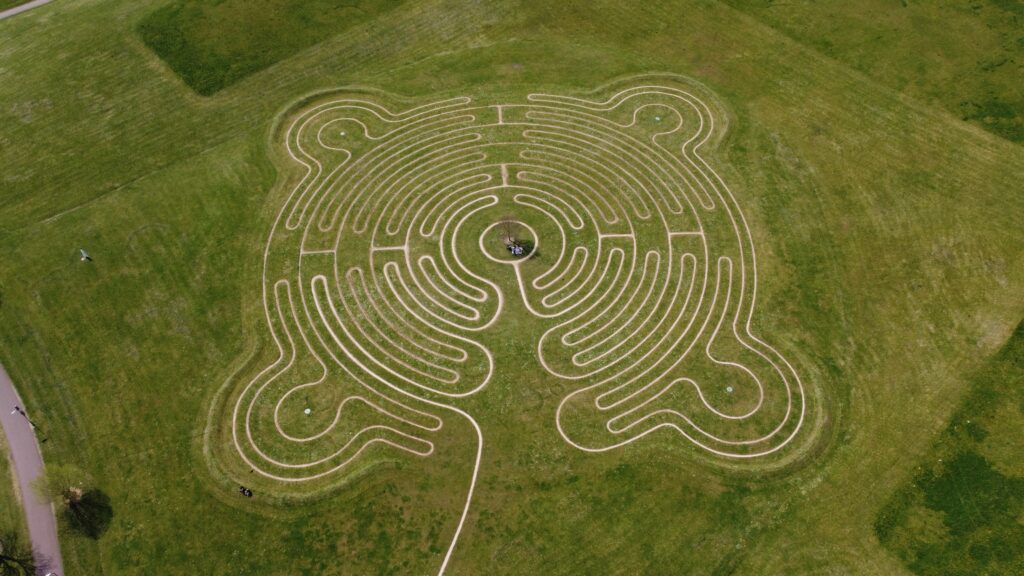Over the past year, we’ve been engaged in the process of a leadership disruption. What began as a request from Diversity Dynamics for EDI assessments for our internal organization became a discovery into a larger question: “What’s holding us back from achieving our boldest dreams of equity?” The recommendation came that we look at how a shift in leadership could shift our organization. Since then, we’ve taken a hard look at what that could look like. Co-Executive Director, Jodi Hardin made her transition after a decade of service to the Canopy, while new teammates, Dindi Gaines and Morgan Schmehl joined us. During the fall of 2021, we decided to restructure ourselves without a formal hierarchy and began reading Reinventing Organizations to guide our transition from hierarchy to network. By January we were able to lay out where we hoped to go over the next six months.

We are far from finished in the transition, but we are already seeing the benefits of building a model where leadership is seen as a collective capacity rather than an individual role linked to one’s position in an org chart.
While these “outside” disruptions of roles and structure have been profound, they are nothing compared to the messier “inside” disruptions to our individual mindsets and in our shared culture that have been required to make the outside shifts possible. Knowing that no tale of true disruption is credible without at least a few awkward pictures from along the way, the following snapshots stand out as useful testimony to the vulnerability involved on this inside journey. As others pursue this kind of journey, we hope they prove useful.
The first less than flattering picture captures one frustrating team discussion around how best to articulate our commitment to racial equity. The conversation stalled abruptly when I used the ill-chosen phrase “yes, but” numerous times. In my mind, I was trying to balance the need to clearly articulate the Canopy’s stance on equity while at the same time meeting people where they are on their own equity journeys. For others around the table, it was a frustrating lack of commitment to the work. Instead of a tug of war between those two poles, resulting in a stalemate, we needed a way to harness the tension, like the string on a bow, to propel our thinking forward toward our target.
Part of the reason that move did not feel obvious in the moment is that many of us on the Canopy team have spent our lives developing skills needed to diffuse and reduce conflict, not to welcome it. Fortunately, other teammates are less conflict averse, and rather than shying away, they stepped bravely forward knowing that conflict, like fire, is often needed to unleash the seeds of growth. Each time they did, it encouraged others to follow suit. Pretty soon our “culture of nice” was taking on more substantive disagreements we had avoided and challenging taken-for-granted assumptions—including my own role in the organization (cue awkward picture number 2). No conversations have been more difficult in my professional career, and none more important or rewarding. Having walked through that together, sparks feel less threatening now, and it’s easier to see that conflict is not something to avoid, but something to welcome, knowing it can be turned up or down as discussions warrant more or less heat.
While harnessing tensions and welcoming conflict are keys to creating a culture that can face problems more bravely and gracefully, they do not automatically produce solutions. Disrupting hierarchy is a complex task, and the bolder we have grown in challenging past conventions, the more overwhelming the task has seemed. Its as if each thread we pull on unravels everything else. In awkward picture number three, you would see us pausing several conversations until we could take up others, knowing that roles and responsibilities are linked to discussions of compensation, which is tied to how to best differentiate levels of contribution and experience, which is connected to how decisions are made about which opportunities to pursue, etc. Figuring out how to prioritize which topics are most important has been hard, but a good guide has generally been to follow the energy—allowing people to step forward to champion the topics they are most drawn to and letting other solutions emerge later in their own time once we’ve made headway on one area.
As we met as a team for a two-day retreat last week, I was thinking about these lessons: harness the tensions, welcome the conflict, and follow the energy. They continued to provide useful guidance as we moved our way through the tasks of designing the next version of how we want to operate together. I kept noticing how different it feels to operate together with this new awareness of our shared ownership for leading the work—and how stepping into this emerging structure unlocks new energy, commitment, and strength to support the load together. While there is still much work to do, and many questions to answer, it does feel we have taken an important turn from disruption to emergence, and that we are focusing on building what comes next and not just dismantling what came before. We hope to have a more complete first draft, or “minimum viable product,” of what this looks like later this summer, and will share our blueprints with you then.


